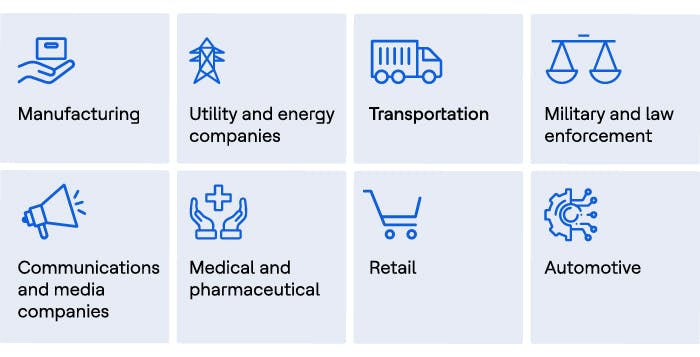The IT/OT convergence basically integrates Information Technology systems with Operational Technology systems. IT systems are used for data-centric computing, while OT systems monitor events, processes, and equipment and makes adjustments in business and industrial operations. These two worlds primarily occupied separate domains, meaningful data or control and relied on omissions from business personnel with vastly different skill sets.
For the last decade, the IT and OT worlds have been steadily converging. Technological advances such as Internet of Things (IoT) & big data analytics systematically enable the digital information world to see, understand and effect the physical and operational world. IT/OT convergence can integrate business processes, insights, and controls when implemented adequately into a unified environment.
Types of IT/OT convergence

What is the Market Viewpoint?
The operational technology market is estimated at $167.9 billion in 2021 and is expected to grow to $368.5 billion by 2027. The market is looking forward to growing at a CAGR of 14% during this speculation period. * MarketsandMarkets.com
Here are some industries which benefit from the convergence of OT and IT:

What to keep in mind to enable IT OT?
Operational Technology systems are primarily used to interact with the physical world; Information Technology systems are mainly used to solve business problems for end users, such as telecommunications service providers. In a nutshell, OT networks communicate with physical machines & IT networks deal with information & data.
Users play a vital role in IT/OT security. Unfortunately, the aligned and sometimes conflicting roles and priorities of IT and OT squads provide ample opportunities for security oversights and vulnerabilities – which can complicate proper management. It is up to users to change the corporate world to support IT/OT convergence, organise the communication and collaboration needed to move closer to convergence, and adjust business policies and workflows that implement the necessary configurations and security guidelines.
Use cases
Sensors and connected systems, such as wireless networks of sensors and actuators, are increasingly integrated into managing industrial environments – such as those for water treatment, electricity, and factories. Integrating automation, communications, and networks in industrial environments is integral to the IoT.
Key Challenges to Consider Around Security
Will IT OT convergence require security companies to innovate and be relevant?
Yes, IT OT convergence will require security companies to be relevant, as digital transformation requires organisations to ameliorate most or all areas of the organisation to be successful.
However, modernising OT through IT integration is no different & Vulnerabilities in OT systems can expose organisations and critical infrastructure to industrial espionage and sabotage.
Will IT OT convergence require security companies to focus on areas like connected vehicles?
The digitisation of crucial vehicle components and increasing IT/OT convergence adoption in the automotive industry brings many new challenges and benefits.
In an automated production line setting, IT refers to everything that supports the internal infrastructure of the business. OT refers to firmware or applications run in internal industrial machinery or equipment. A data-driven approach involves teams from these two different environments working closely together.
While responding to security incidents in vehicles, learnings and regular improvements from new/potential vulnerabilities and malicious hackers should be shared with OT teams seamlessly and trigger modification/changes to systems.
Conclusion – IT & OT Convergence is Inevitable
The benefits of joining IT and OT are too great to ignore. While it may be a slow transition, the transition is inevitable as it continues to progress. CIOs and COOs must adjust to managing operations that separate departments previously worked on.



